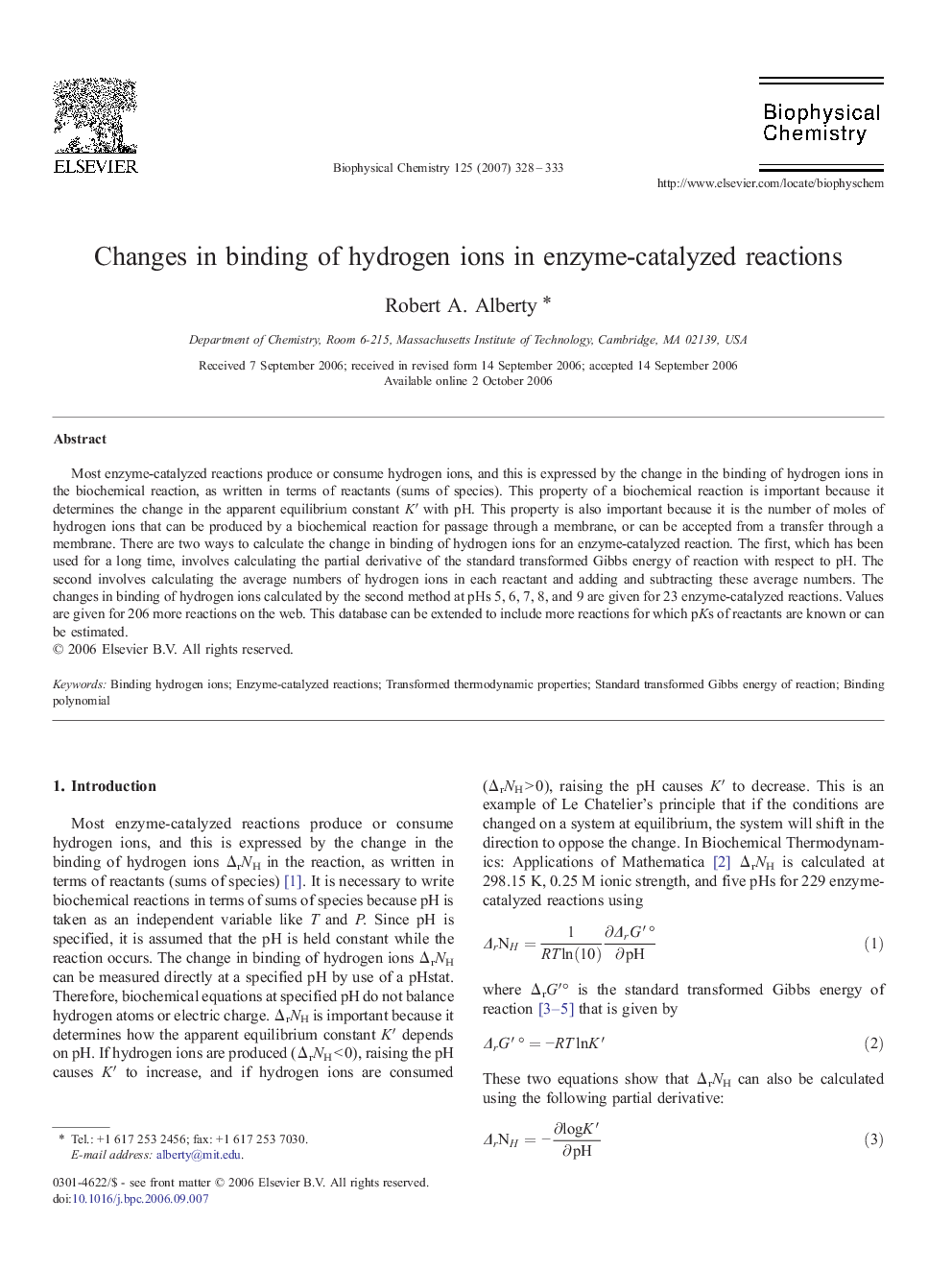| Article ID | Journal | Published Year | Pages | File Type |
|---|---|---|---|---|
| 5372285 | Biophysical Chemistry | 2007 | 6 Pages |
Most enzyme-catalyzed reactions produce or consume hydrogen ions, and this is expressed by the change in the binding of hydrogen ions in the biochemical reaction, as written in terms of reactants (sums of species). This property of a biochemical reaction is important because it determines the change in the apparent equilibrium constant Kâ² with pH. This property is also important because it is the number of moles of hydrogen ions that can be produced by a biochemical reaction for passage through a membrane, or can be accepted from a transfer through a membrane. There are two ways to calculate the change in binding of hydrogen ions for an enzyme-catalyzed reaction. The first, which has been used for a long time, involves calculating the partial derivative of the standard transformed Gibbs energy of reaction with respect to pH. The second involves calculating the average numbers of hydrogen ions in each reactant and adding and subtracting these average numbers. The changes in binding of hydrogen ions calculated by the second method at pHs 5, 6, 7, 8, and 9 are given for 23 enzyme-catalyzed reactions. Values are given for 206 more reactions on the web. This database can be extended to include more reactions for which pKs of reactants are known or can be estimated.
